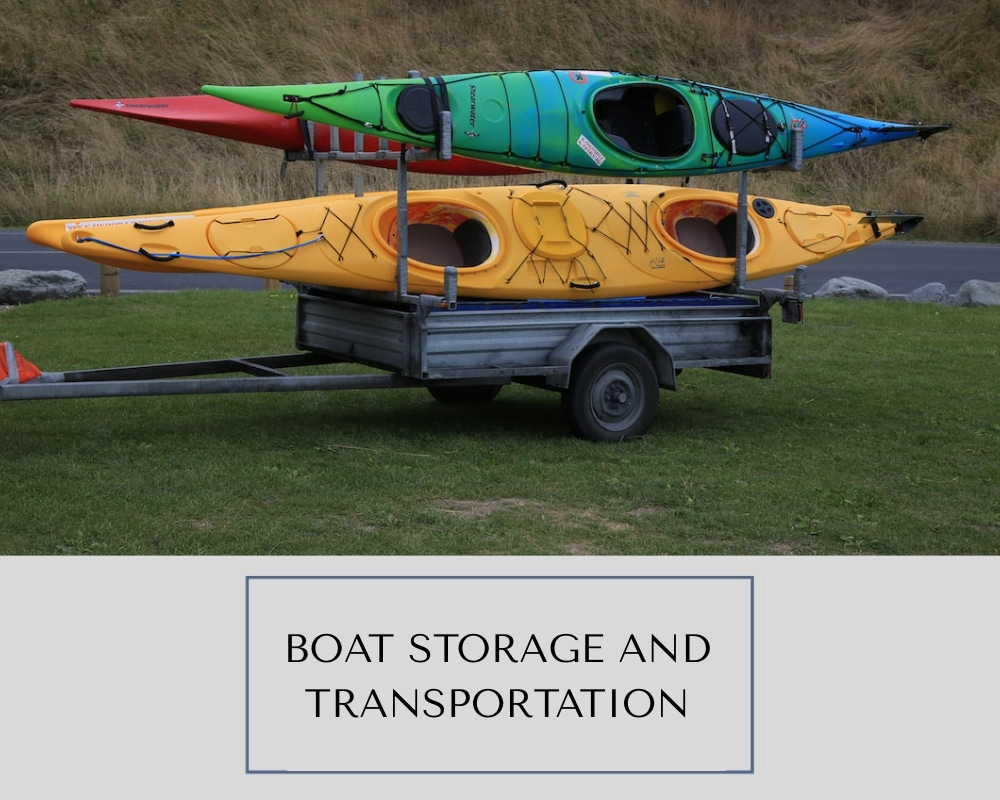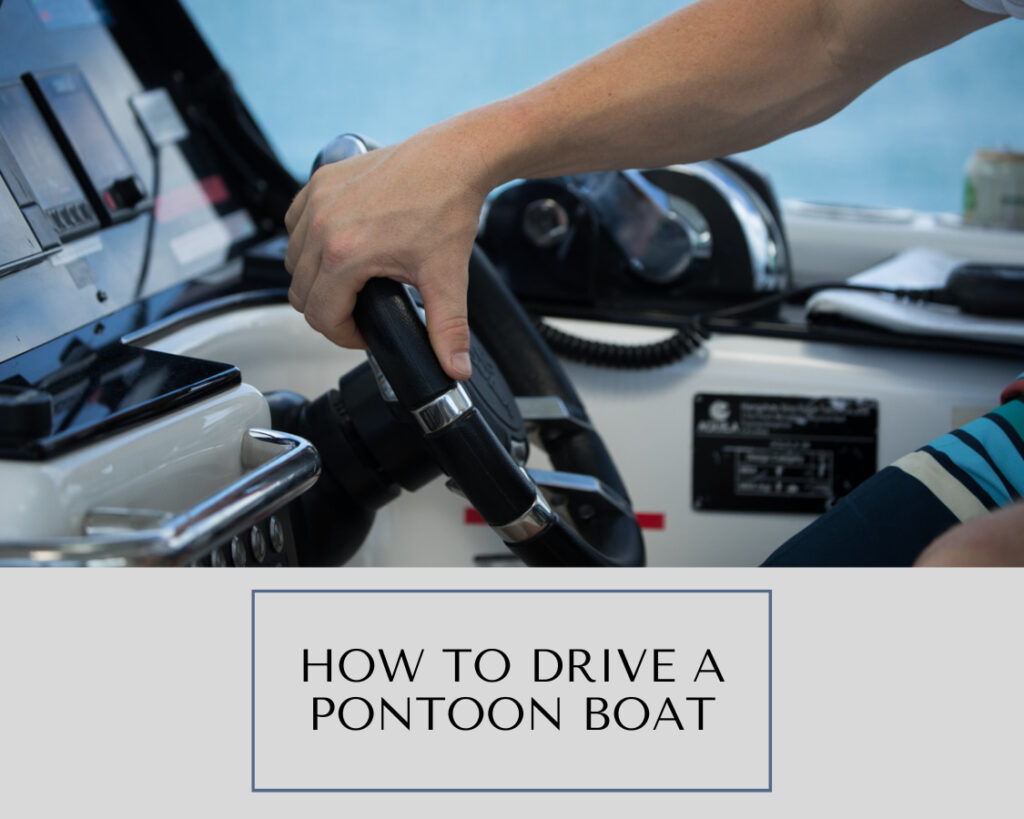Boats are more than just vessels for cruising on the water; they’re investments of time, money, and passion. Whether you’re a seasoned sailor or just dipping your toes into the world of boating, understanding the fundamentals of boat storage and transportation is crucial. This guide is your compass to navigating the waters of boat care, ensuring that your prized possession stays in top shape and arrives safely at its intended destination. We’ll dive into the basics of boat storage, discussing the importance of proper maintenance, security, and preparation for seasonal changes. And when the time comes to move your boat, we’ll provide insights on how to transport it without a hitch, ensuring a hassle-free journey. So, join us on this maritime journey as we explore the essential aspects of boat storage and transportation, making your boating experience as smooth as a calm sea at sunrise.
Boat Storage Options
◾ Indoor Storage Facilities
Indoor storage facilities provide the highest level of protection for your boat. They shield it from harsh weather, potential vandalism, and theft. What sets these facilities apart is their climate-controlled environment, which prevents extreme temperatures and humidity from damaging your vessel. Moreover, many indoor storage facilities offer maintenance and detailing services to keep your boat in top condition.
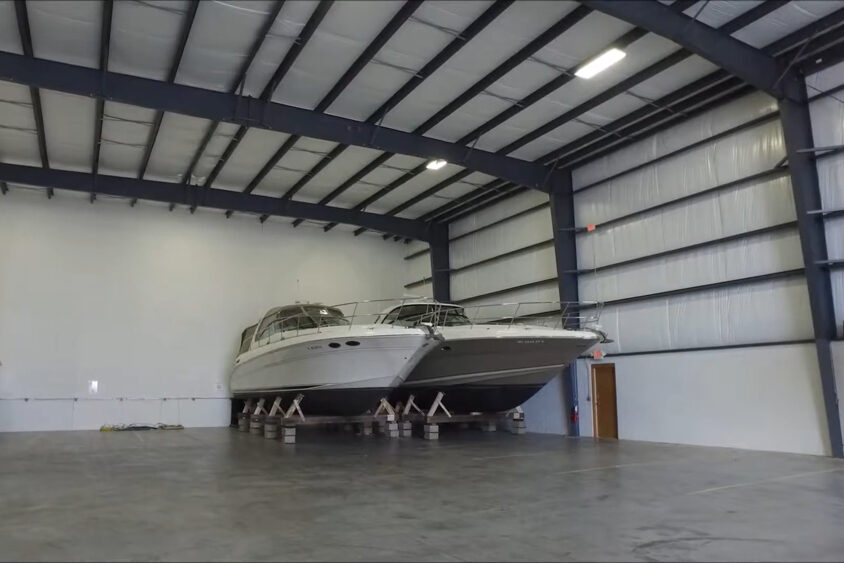
◾ Outdoor Storage Solutions
If indoor storage isn’t an option, outdoor storage solutions can still provide effective protection. Boat covers and shelters are your best friends in this case. High-quality covers can protect your boat from rain, sun, and snow, while shelters offer a roofed space that keeps your boat shielded from the elements. To enhance security, consider adding locks and anchors to safeguard your investment.
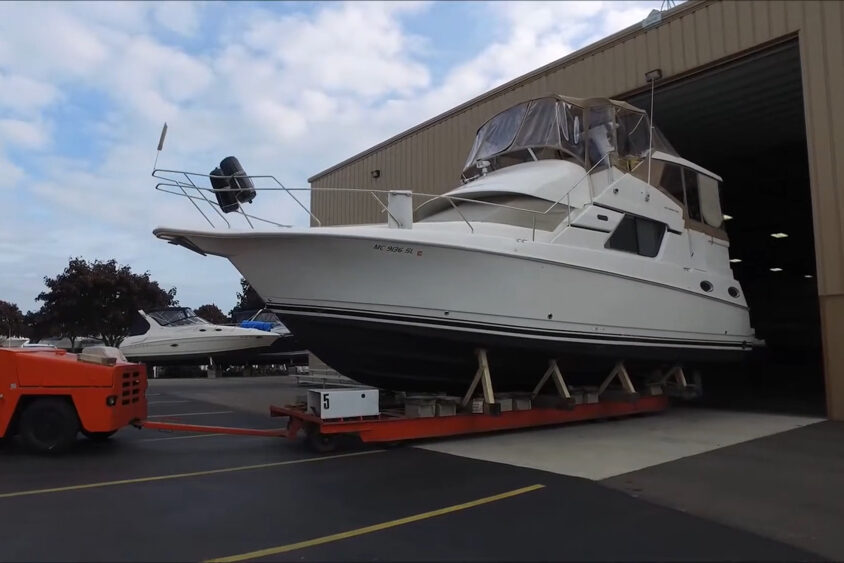
◾ DIY Storage at Home
Storing your boat at home can be cost-effective if you have the space and necessary equipment. Ensure you have boat stands or a proper boat trailer to support and secure your vessel. In your yard or garage, choose a spot that is away from trees, where falling leaves can create a maintenance headache. Regularly inspect your boat during storage to catch any issues early, ensuring it remains in optimal condition.
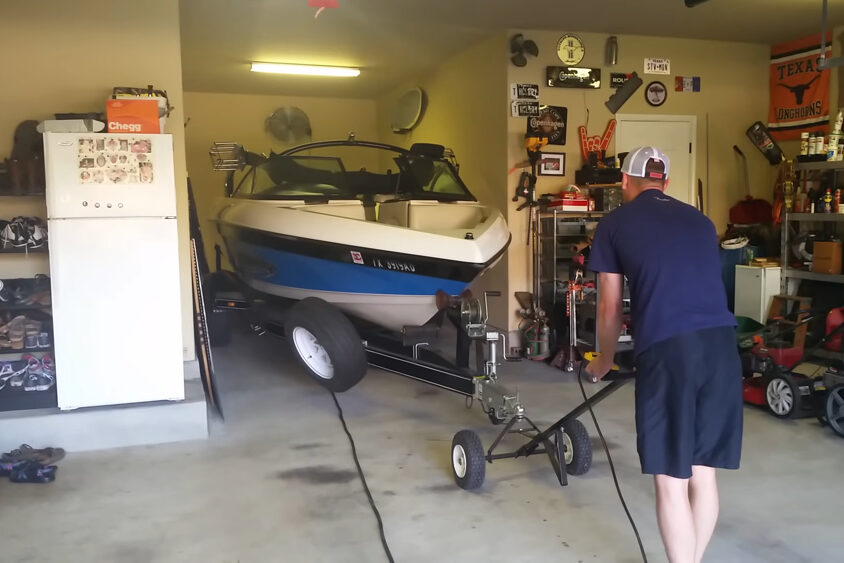
Indoor Vs. Outdoor Boat Storage
| Aspect | Indoor Boat Storage | Outdoor Boat Storage |
|---|---|---|
| Protection from Weather | Offers excellent protection from the elements, including rain, snow, and UV rays. | Provides less protection from the elements, exposing the boat to weather conditions. |
| Security | Enhanced security with limited access, surveillance, and controlled environments. | Typically, security may vary based on the storage location. |
| Maintenance Services | Often offers maintenance and detailing services. | Limited or no maintenance services provided. |
| Convenience | Allows year-round access and easy launching and retrieval. | May have seasonal restrictions, impacting accessibility. |
| Cost | Generally more expensive due to the added benefits. | Usually more cost-effective, but maintenance may be required. |
| Long-Term Storage | Ideal for long-term storage and protection. | Suitable for shorter storage durations. |
| Space for Additional Equipment | May offer space for additional boat-related equipment. | Limited space for additional equipment, depending on the site. |
| Accessibility | Often located in urban areas, making them accessible. | Located in various settings, including rural and remote areas. |
Preparing Your Boat for Storage
Before tucking your boat away for storage, there are several crucial steps to take:
◾ Cleaning and Maintenance
A clean boat is a happy boat. Thoroughly clean your boat, both inside and out, to prevent mold and mildew growth. Inspect the engine, electrical systems, and hull for any signs of wear or damage. Address any maintenance issues promptly to ensure your boat is in pristine condition when it’s time to use it again.
◾ Safety Measures
Protect your boat from theft and damage by removing valuable items, electronics, and personal belongings. Ensure all access points, including doors, hatches, and windows, are securely locked. Consider investing in an alarm system or a boat cover with built-in security features for added protection.
◾ Documentation and Permits
Don’t forget to check and organize all the necessary documentation and permits required for your boat. This includes registration, insurance, and any special permits needed for your area. Ensuring your paperwork is in order will help you avoid legal issues during storage and transportation.
Choosing the Right Trailer
◾ Types of Boat Trailers
Boat trailers come in various types, each with its own advantages and considerations. Roller trailers, for example, make launching and retrieving your boat easier, while bunk trailers provide excellent support for the hull. Understanding these differences is crucial when selecting the right trailer for your specific boat.
◾ Selecting the Appropriate Trailer for Your Boat
The trailer you choose must match your boat’s size and weight. Before purchasing or renting a trailer, carefully measure your boat to ensure a proper fit. Inadequate trailers can lead to safety hazards and transportation difficulties. Selecting the right trailer is a key element in ensuring the smooth movement of your boat.
◾ Trailer Maintenance
Regular maintenance is essential for your trailer’s longevity and performance. Inspect the trailer’s tires, brakes, lights, and suspension system before every journey. Lubricate moving parts and ensure that the trailer’s weight distribution remains even. Proper maintenance minimizes the risk of breakdowns during transportation, ensuring a safe and hassle-free trip.
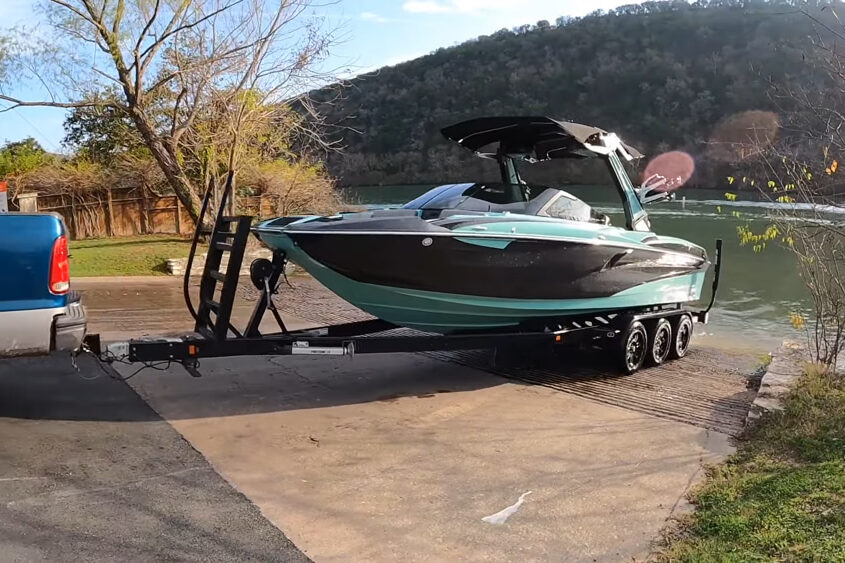
Loading and Securing Your Boat
◾ Proper Loading Techniques
Loading your boat onto the trailer correctly is vital for transportation safety. Ensure that the boat is centered and aligned on the trailer. Use bow stoppers and transom tie-downs to secure the boat in place, preventing it from shifting during transit. If your boat is equipped with a keel roller, make sure it lines up with the keel of your vessel. Proper loading ensures a smooth journey and minimizes wear and tear on your boat.
◾ Securing Your Boat for Transportation
Once your boat is loaded onto the trailer, securing it properly is of utmost importance. Use high-quality straps, ropes, or chains to tie down your boat securely. Pay special attention to the bow and stern; these are critical areas to secure. Make sure the boat doesn’t wobble or move during transit, as this can lead to accidents and damage. Regularly check the security of these fastenings during stops or rest breaks.
◾ Safety Tips
Always follow safety guidelines while transporting your boat. Ensure the boat and trailer lights are working correctly, and double-check that all safety equipment, including life jackets and fire extinguishers, is on board. Respect speed limits and be cautious when driving around curves or on uneven terrain. Safely transporting your boat requires vigilance and adherence to all safety regulations.
Legal and Safety Regulations
Understanding the laws and safety regulations is essential for a trouble-free boat transportation experience. Familiarize yourself with the requirements in your area, which may include trailer and vehicle specifications, boat width, and lighting regulations. Ensure you have all the necessary safety equipment on board, such as life vests, navigation lights, and distress signals. Complying with these regulations will prevent legal issues and enhance safety during transportation.
Long-Distance Transportation
When planning long trips or interstate travel with your boat, you need to consider various logistics and legal requirements. Check the specific regulations and permits required for traveling across state lines. For long-distance transportation, especially if it’s a considerable distance, you might want to hire professional transport services. These experts are well-versed in the intricacies of long-haul boat transport, ensuring a seamless journey.
Off-Season Maintenance
Before storing your boat for the off-season, thorough maintenance is vital. This includes checking your boat’s condition and addressing any issues. Change the oil, clean or replace the spark plugs, and inspect the engine, steering, and electrical systems. Preparing your boat for storage is an investment in its future performance, ensuring it’s ready to hit the water when the next season arrives.
Tips for a Smooth Journey
- Ensure the proper balance and distribution of the load on your trailer.
- Reduce wind resistance for improved fuel efficiency.
- Maintain a steady and safe driving speed.
- Be prepared to handle rough weather conditions during your journey.
- Know how to address unexpected situations, like sudden rain or high winds, for a safe and successful trip.

Final Thoughts
In conclusion, mastering the art of boat storage and transportation is essential for boat owners who want to ensure their vessel’s longevity and enjoy stress-free journeys. By understanding the various storage options, preparing your boat properly, and following safety regulations, you can take the hassle out of storing and moving your boat. Additionally, adopting eco-friendly practices and budgeting wisely will help you protect your boat and the environment. With this guide, you’re well-equipped to embark on your boating adventures with confidence.

